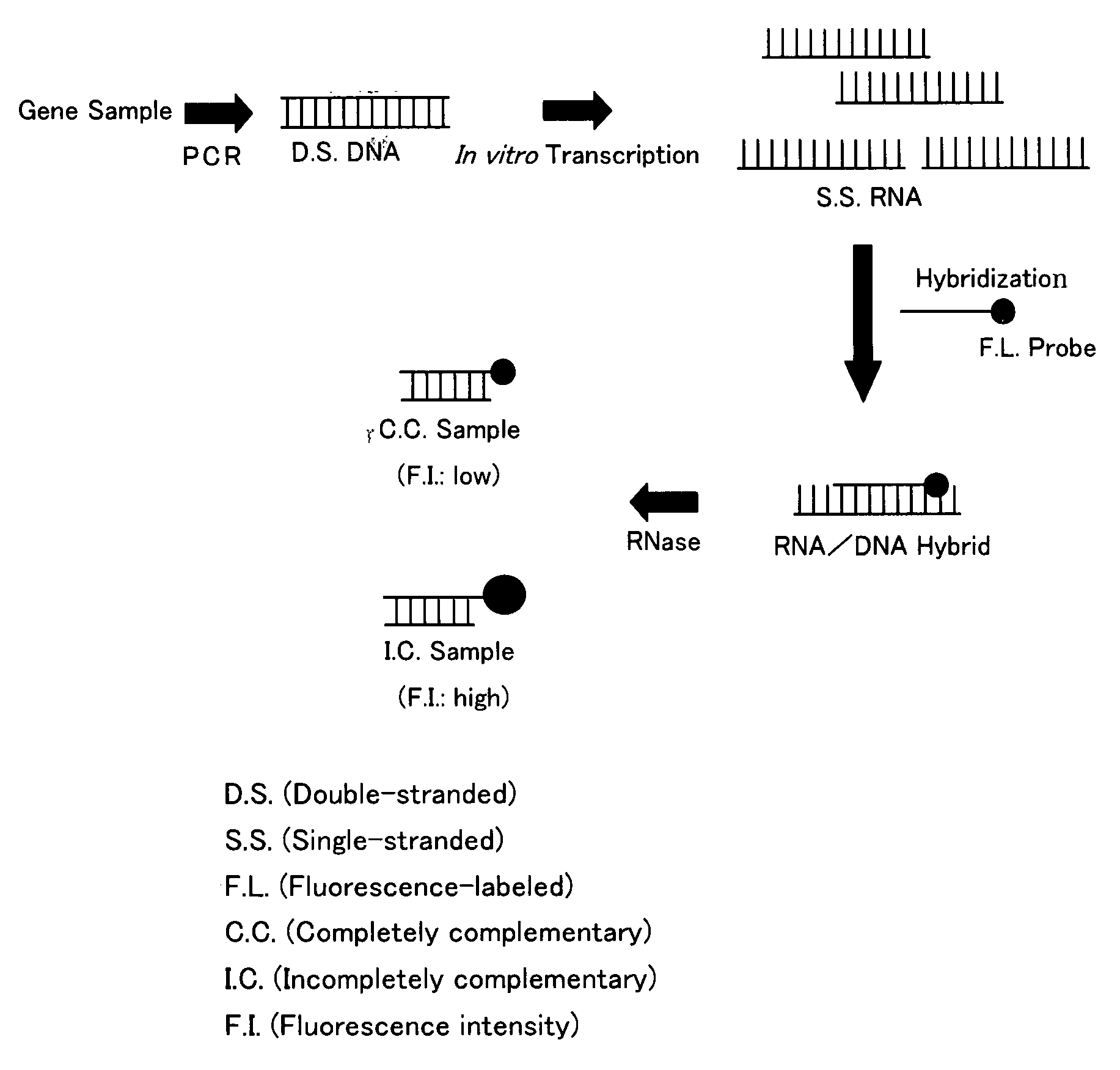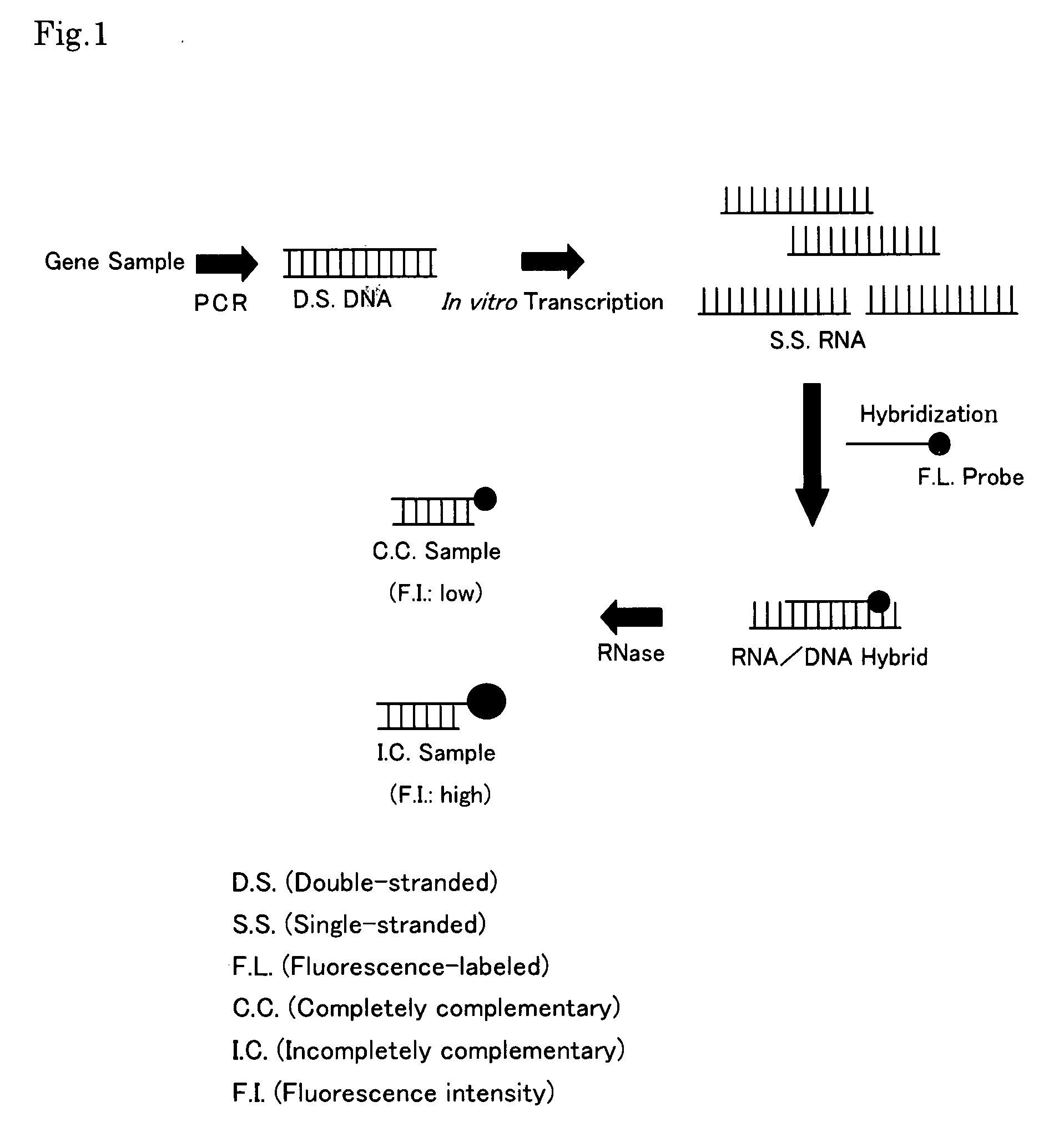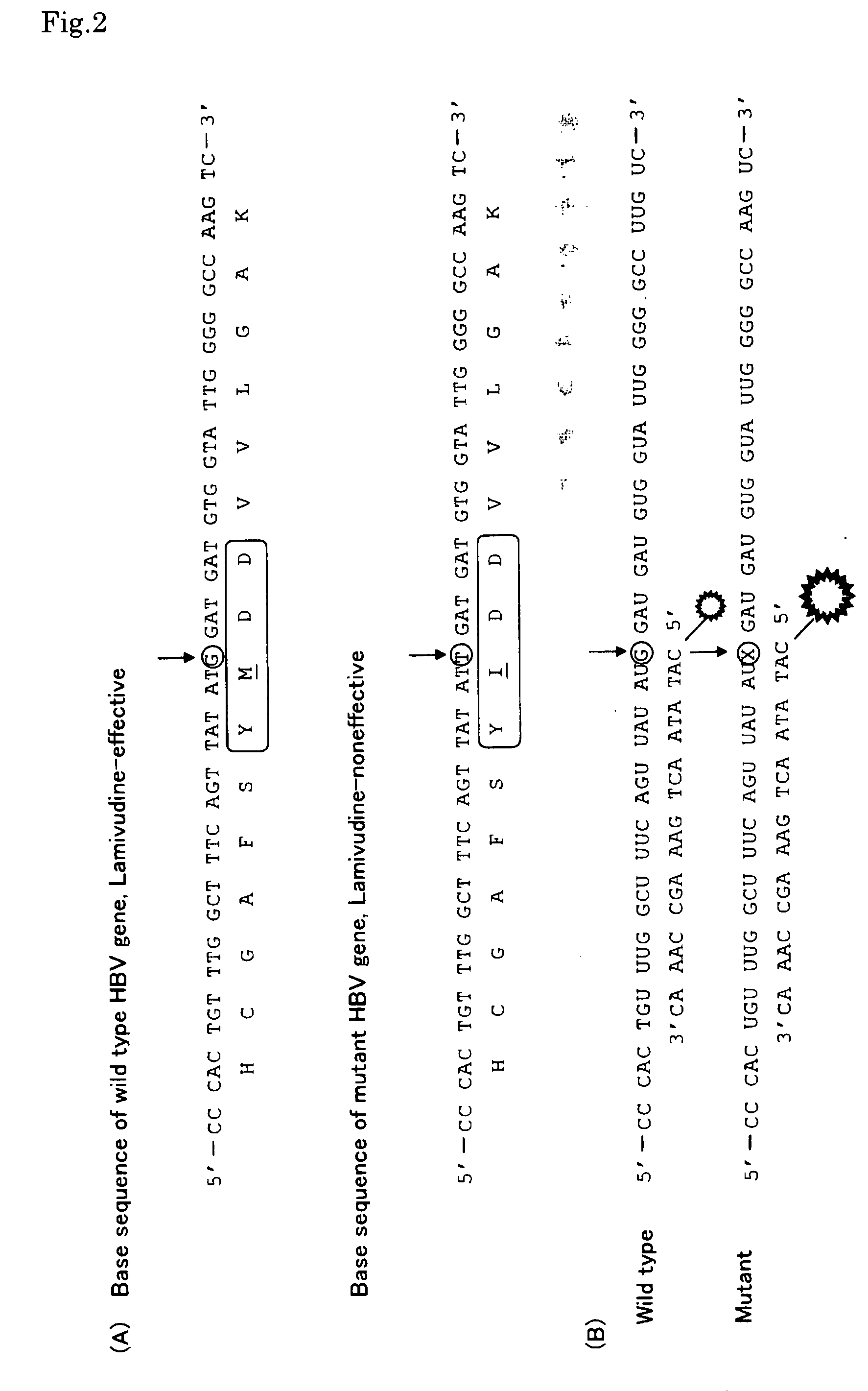Gene Detecting Method
- Summary
- Abstract
- Description
- Claims
- Application Information
AI Technical Summary
Benefits of technology
Problems solved by technology
Method used
Image
Examples
example 1
Detection of Gene Mutation Observed in Hepatitis B Virus
1.1 Preparation of DNA (PCR)
[0043]PCR reactions were carried out using plasmid gene containing hepatitis B virus gene (wild-type or control gene) and plasmid gene containing mutant hepatitis B virus gene (target gene) (cf. FIG. 1 (A)) as template, to obtain gene fragments containing the sites to be analyzed (to be detected), wherein each plasmid gene was composed of pUC18 with the SmaI site thereof being linked with the hepatitis B virus gene. As PCR primers there were used primer 1 having T7 RNA polymerase promoter sequence at the 5′-end thereof (SEQ ID NO:5), and primer 2 which is gene specific (SEQ ID NO:6) for DNA polymerase, Pyrobest® (TaKaRa). The reaction conditions are as follows: Composition for PCR (100 μl): template DNA (<1 μg), DNA polymerase Pyrobest® (2.5 unit), primer 1 (1 μm), primer 2 (1 μm), dNTP (200 μm), 1× Pyrobest Buffer II. PCR conditions: One cycle of thermal denaturation at 95° C., 15 sec, followed by t...
example 2
Detection of Gene Mutation Observed in Aldehyde Hydrogenase Gene
1.1 Preparation of DNA (PCR)
[0051]PCR reactions were carried out using plasmid gene containing aldehyde hydrogenase gene (wild-type) and plasmid gene containing aldehyde hydrogenase gene (mutant) (cf. FIG. 4) as template, to obtain gene fragments containing the sites to be detected, wherein each plasmid gene was composed of pUC18 with the SmaI site thereof being linked with aldehyde hydrogenase gene. As PCR primers there were used primer 1 having T7 RNA polymerase promoter sequence at the 5′-end thereof (SEQ ID NO:7), and primer 2 which was gene specific (SEQ ID NO:8) for DNA polymerase, Pyrobest® (TaKaRa). The reaction conditions were as follows: Composition for PCR (100 μl): template DAN (<1 μg), DNA polymerase Pyrobest® (2.5 unit), primer 1 (1 μM), primer 2 (1 μM, dNTP (200 μm), 1× Pyrobest Buffer II.
PCR conditions: One cycle of thermal denaturation at 95° C., 15 sec, followed by thirty-five cycles of thermal denatur...
example 3
Simultaneous Detection of Gene Mutations Observed in ADRB2 and Hepatitis B Virus
1.1 Preparation of DNA (PCR)
[0056]PCR reactions were carried out using plasmid genes containing human β2-Adrenergic Receptor (ADRB2) (wild-type and mutant) as template, to obtain gene fragments containing the sites to be detected. As PCR primers there were used primer 1 having T7 RNA polymerase promoter sequence at the 5′-end thereof (SEQ ID NO:9), and primer 2 which is gene specific (SEQ ID NO:10) with DNA polymerase, Pyrobest® (TaKaRa). The reaction conditions were as follows:
Composition for PCR (100 μl): template DNA (<1 μg), DNA polymerase Pyrobest® (2.5 unit), primer 1 (1 μM, primer 2 (1 μM, dNTP (200 μM), 1× Pyrobest Buffer II.
PCR conditions: One cycle of thermal denaturation at 95° C., 15 sec, followed by thirty-five cycles of thermal denaturation at 95° C., 15 sec, annealing at 55° C., 30 sec, and then elongation reaction at 72° C., 30 sec.
Primer 1:5′-ATGATCACTAATACGACTCACTATAGGGCTTTCCCCCACTGTTTG...
PUM
| Property | Measurement | Unit |
|---|---|---|
| Fluorescence | aaaaa | aaaaa |
Abstract
Description
Claims
Application Information
 Login to View More
Login to View More - R&D
- Intellectual Property
- Life Sciences
- Materials
- Tech Scout
- Unparalleled Data Quality
- Higher Quality Content
- 60% Fewer Hallucinations
Browse by: Latest US Patents, China's latest patents, Technical Efficacy Thesaurus, Application Domain, Technology Topic, Popular Technical Reports.
© 2025 PatSnap. All rights reserved.Legal|Privacy policy|Modern Slavery Act Transparency Statement|Sitemap|About US| Contact US: help@patsnap.com



